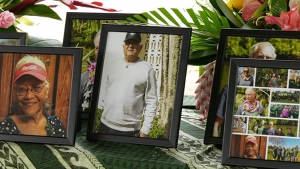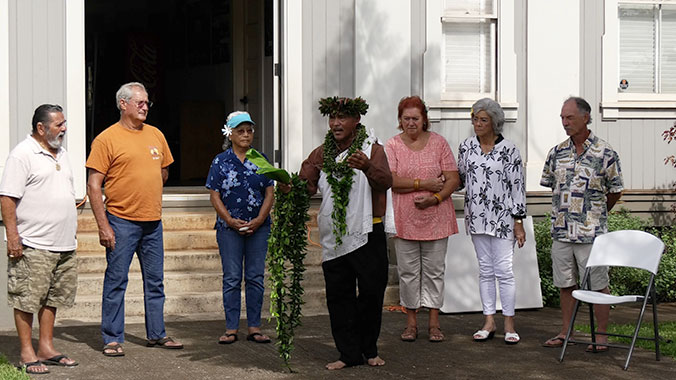University of Hawaiʻi at Mānoa students are preserving the history of the North Shore communities of Waialua and Haleʻiwa by interviewing kūpuna (grandparents, elders) from those areas. The three-credit, spring semester course offered by the UH Mānoa departments of anthropology and ethnic studies is an oral history program that preserves the memories and experiences of the kūpuna for future generations.
“We’re finding that a lot of kūpuna; their stories are really important,” said Keola Silva, a UH Mānoa PhD student who was also born and raised in Waialua. “They hold lots of life lessons, lots of golden nuggets that we can use and apply to today and in our future.”
The students complete the course and project by producing and presenting each kūpuna with their own digital story map, which combines maps with narrative text, images, video and other multimedia content.
Oral history project touches lives

The class of 12 was a mix of undergraduate and graduate students representing majors in anthropology, ethnic studies, Hawaiian studies and English; along with two community members who participated in the class activities. The kūpuna, called “narrators,” shared experiences in Waialua ranging from music to genealogy to plantation work.
- Related UH News story: Students record memories to preserve Waialua’s past, May 8, 2018
“If I’ve touched one person, than I think I’ve done what I set out to do,” said Judy Miner Miram, one of the kūpuna narrators and a life-long Waialua-Haleʻiwa resident. “I felt honored to share what Haleʻiwa was like in the ‘40s, ‘50s, ‘60s.”
After the interviews, the students transcribed the recordings, worked through the editorial process and sought guidance from their narrators and each other as they compiled their research into digital story maps.
One student, Daven Chang, says that he was so moved by the experience that he wrote and arranged a song called, “Waialua is Calling to Me.” He and his classmates performed it at the hōʻike, or exhibition, of the kūpuna digital story maps. About 100 people attended the event, where students thanked the narrators and shared a final meal with them.
“It reinforces my belief that when you are tied to community, and you know your community and the value of your community, even more so you become motivated to do things for the community,” said Silva.
The interviews are to be archived at the UH Center of Oral History. The program is a partnership with the ʻĀina Ulu Program of Kamehameha Schools, and UH worked with the Waialua Hawaiian Civic Club to connect kūpuna with students for the project.
The North Shore Field School started in 2013 as an archaeology/anthropology program where students learned techniques in low impact archaeology at culturally significant sites on the North Shore of Oʻahu.
In spring 2018, the focus shifted to ethnography and the research of life stories, rather than artifacts.


